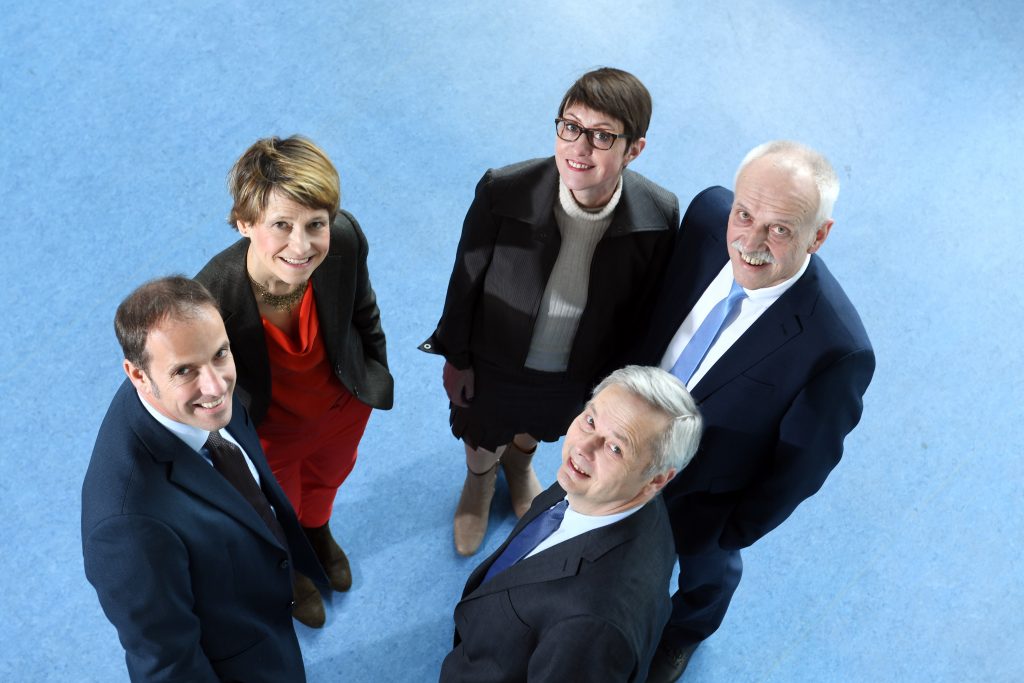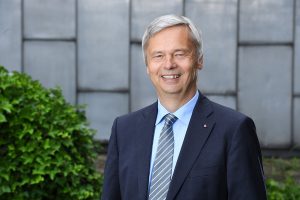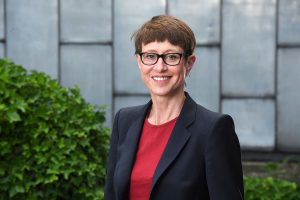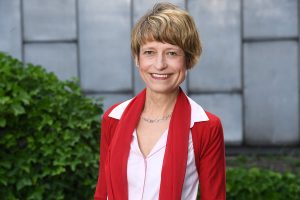
In February 2019, the Berlin alliance had to face the international review panel
Dedicated, highly capable, and in harmony with each other
The major Berlin universities and Charité – Universitätsmedizin Berlin have been working closely together since 2016 to jointly and strategically develop Berlin as a center of science and research. Since then, funding has been secured for seven successful Berlin cluster initiatives and the Berlin University Alliance’s Excellence Strategy application has also proven successful. In February 2019, the Berlin Alliance presented itself to an international panel of experts as part of the process of attaining excellence status. TU president Professor Christian Thomsen shares his personal impressions of this important visit, which also marked a milestone in the process of establishing an alliance of excellence for Berlin.
 Professor Thomsen, what did the experts attach particular importance to? What was your personal impression?
Professor Thomsen, what did the experts attach particular importance to? What was your personal impression?
The visiting experts were primarily interested in examining whether our application was a paper tiger or whether it genuinely reflected reality at the Berlin universities. This was the special significance of the review. I believe our efforts here proved very successful. A great many people from all institutions and status groups were involved. They presented their labs, the results of their research groups, and successfully fielded questions. What they demonstrated was their absolute belief in our concept and the commitment of every member of the participating institutions to achieving its implementation. My impression was that we succeeded in conveying our positive approach. The research lab tours were a chance to not only present our research work but also, together with colleagues from the other institutions involved, our concept of inter-university infrastructures. The Einstein Center Digital Future provided an impressive example of what we have thus far achieved: a joint institution involving all four partners.
What are the most important objectives of the joint application, i.e. components, that will make Berlin stand out as an exceptional center of science and research?
We identified social cohesion as the first key challenge. This is an issue which all the institutions are involved in and which certainly cannot be satisfactorily addressed by one university alone. We were able to demonstrate by means of this issue the core of our rationale for establishing the Alliance. Knowledge exchange is another key topic, particularly the exchange with society, both in Berlin and worldwide. Our objective is to listen carefully to the questions society is asking about issues such as climate change, and then address these questions in our research. Similarly, we wish to set new standards for the quality of research, develop a joint infrastructure, and attract the best minds.
How important is the support of the Berlin Senate for the application?
It is, of course, extremely important, and should in no way be taken for granted. The Senate provides us with support on two levels. All the institutions have received seed funding from an innovation fund over a period of two years, with 1.2 million euros going to TU Berlin alone. In addition to this financial commitment, however, many people from the Senate have also contributed their expertise, provided ideas, and supported us with their input. It was of course particularly important that Michael Müller, both as governing mayor and in his capacity as senator for higher education and research, was personally involved in the review process. His committed and highly competent representation of the Berlin scientific landscape was a definite plus and had an extremely positive effect on the reviewers. The strength of his statement was reflected in the applause it received, and subsequent feedback has confirmed my feeling that he made an outstanding impression.
What most impressed and perhaps even surprised you?
Each of the institutions involved in the application has its own history, its own structures , its own culture. This meant that we had to learn to speak a common language at the start of the application process. After all, it would hardly create a good impression if the four presidents were to contradict each other. I think we succeeded very well in achieving a common identity. We were not addressed as the representatives of particular universities but rather as Alliance partners. This gave the impression of our really being in harmony with each other; this was only achieved, however, as the result of a great deal of hard work. Given all this, achieving a concerted and convincing identity was a very special experience for me personally. The results announced on 19 July 2019 are also extraordinary in my view and represent a huge milestone for Berlin and our University. Our courage paid off.
Many thanks!
Difference as a strong basis
Vice president for research, appointment strategy, knowledge & technology transfer Professor Christine Ahrend’s contribution to the Alliance application was primarily in the area of top level research and the development of knowledge exchange.
 I was able to initiate a very fruitful scientific-political discussion about top level research and knowledge exchange (KE) within the Alliance. We are committed to the unity of science and technology transfer and regard the principle of transdisciplinary research as highly beneficial. This is a source of particular pleasure to me. At TU Berlin we have also developed transdisciplinary forums (TraFo). These formed the blueprint for the “PreResearch Forum” in fall 2018, the first joint undertaking of the Berlin University Alliance (BUA).
I was able to initiate a very fruitful scientific-political discussion about top level research and knowledge exchange (KE) within the Alliance. We are committed to the unity of science and technology transfer and regard the principle of transdisciplinary research as highly beneficial. This is a source of particular pleasure to me. At TU Berlin we have also developed transdisciplinary forums (TraFo). These formed the blueprint for the “PreResearch Forum” in fall 2018, the first joint undertaking of the Berlin University Alliance (BUA).
The research groups are already demonstrating how our different areas of focus and our different perspectives, experience, and networks complement each other. Networking and joint activities in KE and science communication will further open up Berlin as a center of science and research to society, both within Germany and abroad. I have a real sense of dynamism and I very much hope that our differences can form a strong basis for the BUA.
Attractive new options
Vice president for education, digitalization, and sustainability Professor Hans-Ulrich Heiß advocates the Alliance-wide teaching offers of project workshops.

Awakening an interest in science and research among students and fostering that interest through appropriate learning and teaching formats is a very important theme. The Alliance very effectively provides new options for students from all four institutions to take part in interdisciplinary work. The concept of project workshops to support student initiatives has been established for decades at TU Berlin and is now being adopted across the Alliance. I am convinced that collaboration and inter-university offers serve to make Berlin even more attractive as a center of science and research.
Opening up courses to students from the other institutions and the Alliance-wide utilization of learning platforms containing a rich array of material creates new possibilities for the personalized and interdisciplinary organization of degree programs.
Working together to achieve global presence
Vice president for strategic development, junior scholars, and teacher education Professor Angela Ittel contributed expertise gained in her work in the advancement of junior scholars to the Alliance application.

I was involved in shaping the “Promoting Talents” field of action within the Alliance. The planned activities are based very directly on our efforts to provide the work of junior scholars at TU Berlin with a more visible structure, compatible in terms of content and organization within the Alliance. Junior scholars will be able to profit enormously from the major opportunities to participate in inter-university offers. Collectively, we will be able to react much more dynamically and effectively to educational requirements. Additionally, I represented the cross-cutting themes of diversity and gender equality as well as internationalization at all levels of our application. The most recent successes in these areas at TU Berlin – with their visibility increased in part through the latest awarding of the “HRK Re-Audit” certification – mean that we have been able to contribute many ideas to the Alliance. Continued cooperation in these areas will help make Berlin an extremely attractive center of science and research with a global presence.
Role model for administration
Vice president for administration and head of Central University Administration Dr. Mathias Neukirchen sees the Alliance as a source of new opportunities and ideas for administrative science management.

It is of course also an enormous challenge to jointly organize on many levels the administration of such large institutions, so strong in terms of personnel and research as the three major universities and the Charité are. The administrative heads – and this is not a new development by the way- are working very closely together to fully exploit and develop collaboration in the area of administration. We have achieved a great deal at strategic and operational level through the many meetings we have had. I believe we can face the future with pride having developed concepts to also make Berlin a role model for administrative science management. In the future, the Berlin scientific community will benefit enormously from the impetus provided by the intensified cooperation with our Alliance partners over the past months.
